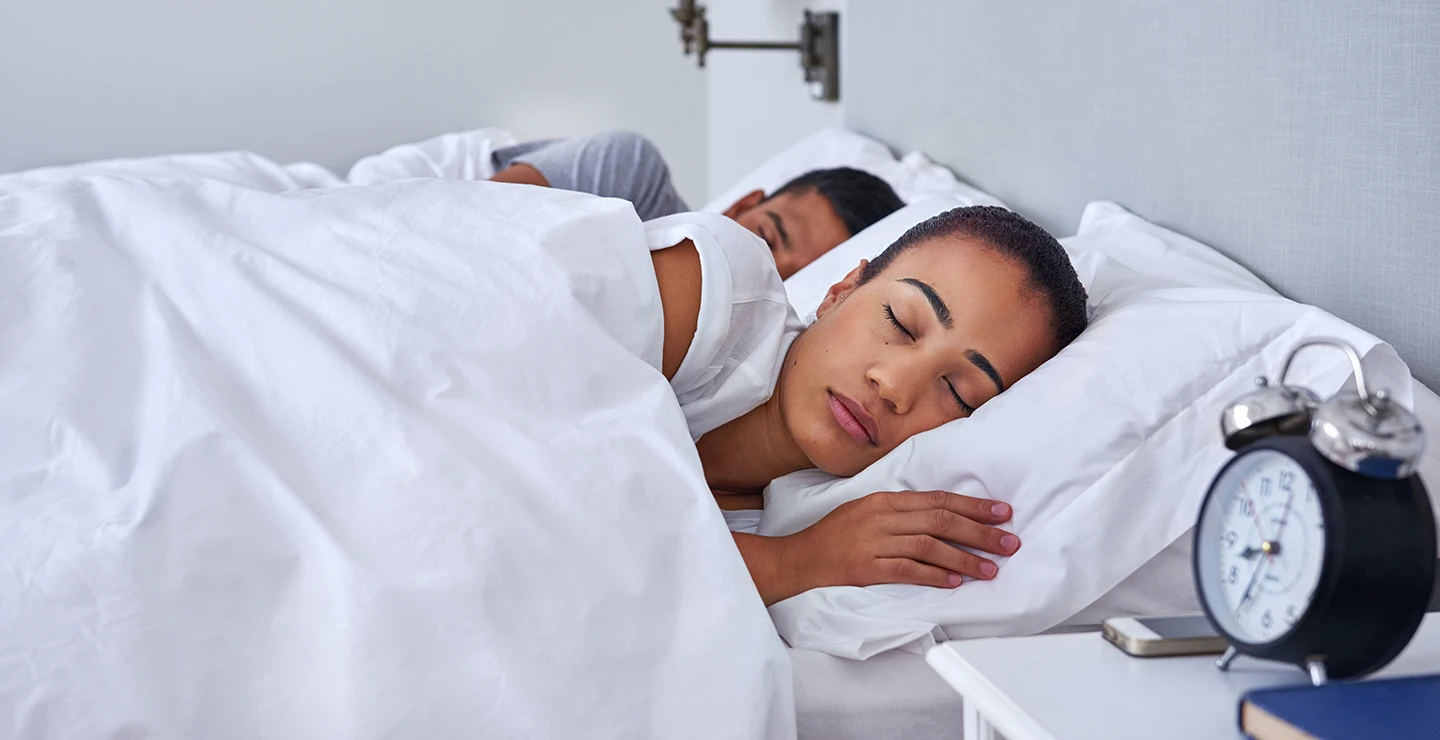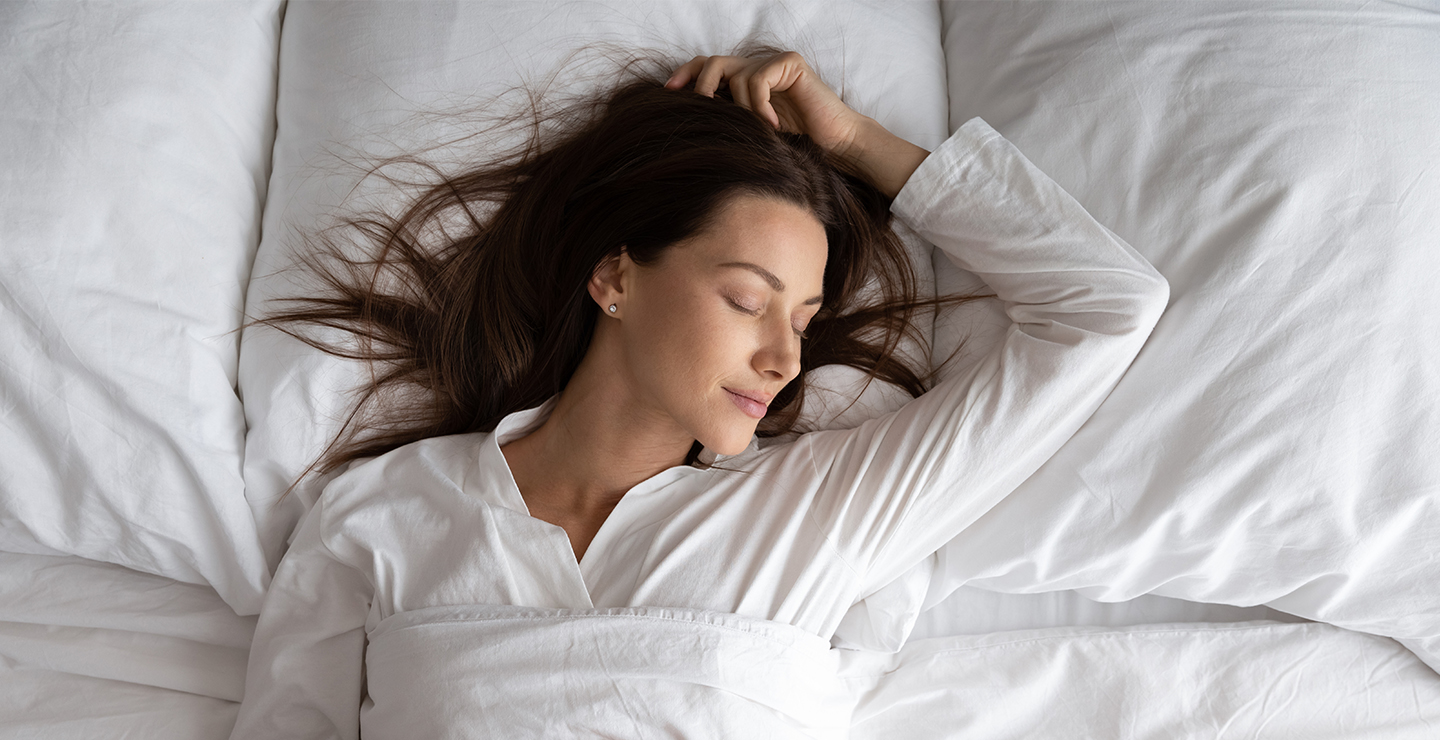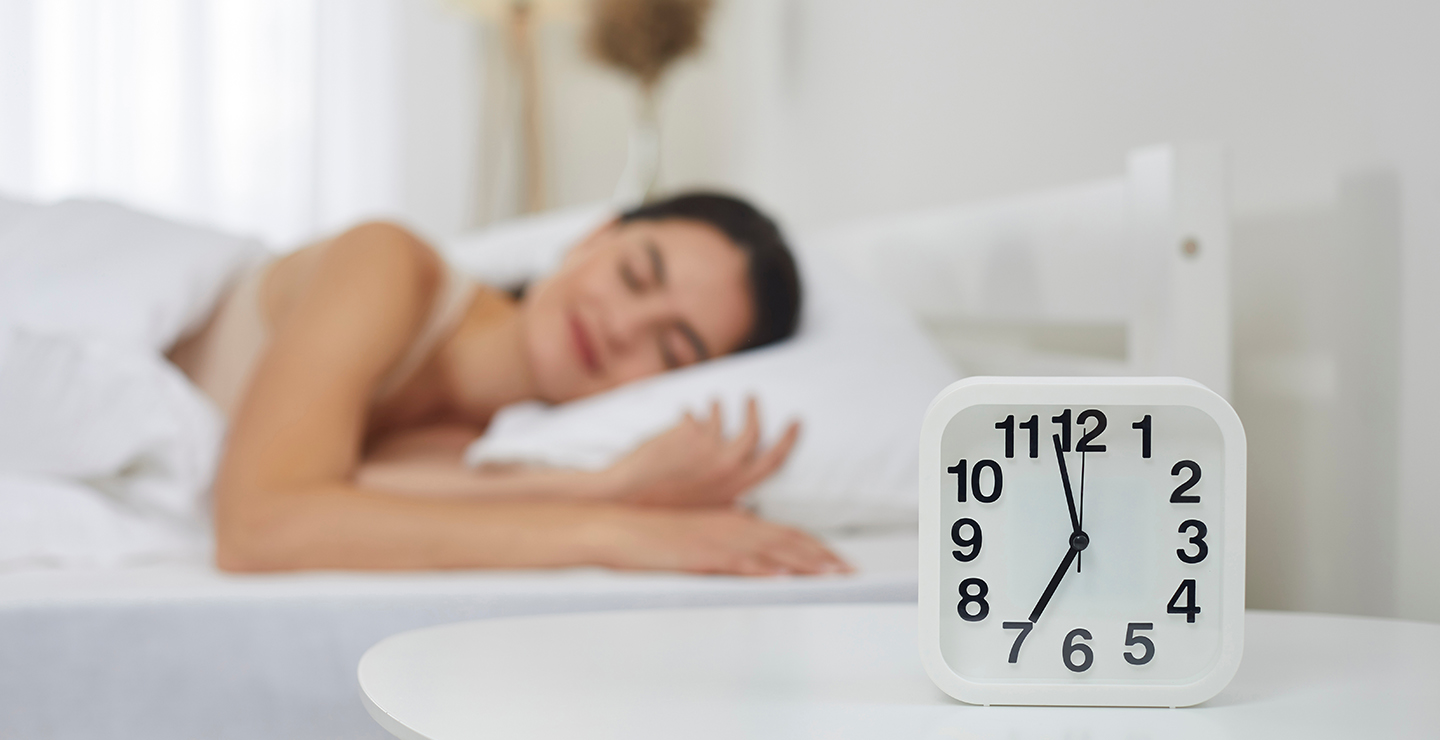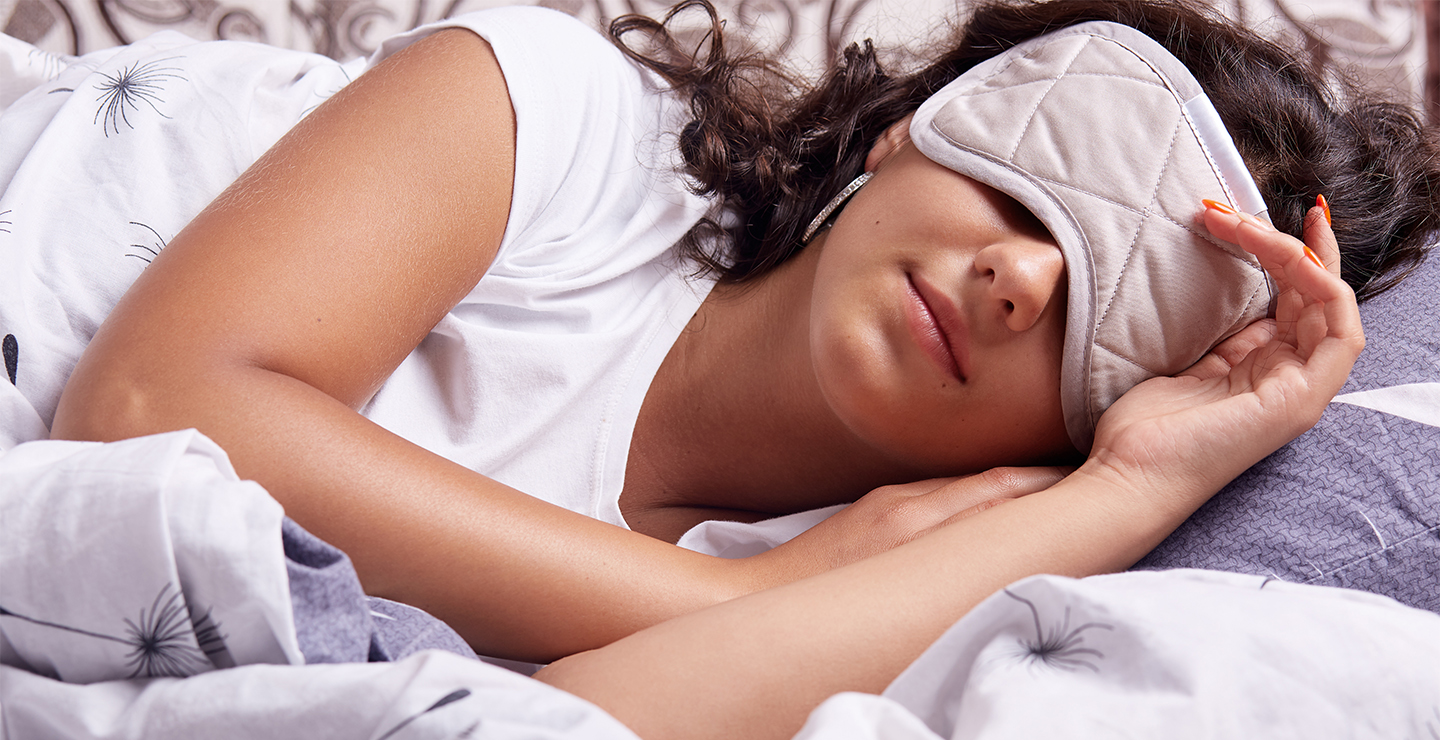What is the Circadian Rhythm & 3 Tips to Keep it In Check
Circadian rhythms are 24-hour cycles that regulate bodily processes like energy levels, hunger, mood, body temperature, and sleep.
Struggles & Remedies


Circadian rhythms are 24-hour cycles that regulate bodily processes like energy levels, hunger, mood, body temperature, and sleep. Depending on your age, gender, and specific hormonal makeup – as well as a host of environmental factors – your circadian rhythms might look different from someone else’s.
Let’s dive into the inner workings of circadian rhythm, what factors can affect it, and how to take care of your internal clock for optimal wellbeing.
Let’s dive into the inner workings of circadian rhythm, what factors can affect it, and how to take care of your internal clock for optimal wellbeing.
What Is the Circadian Rhythm?
The circadian rhythm is a 24-hour cycle regulated by your body’s internal clock.1The word circadian comes from the Latin circa diem, which means “about a day.”
Many organisms (not just humans) rely on this internal biological clock to function and survive. The circadian rhythm runs on a daily schedule set by your internal clock, essentially run by molecules interacting with cells.1
A “master clock” in your brain keeps your circadian rhythm and internal clock properly synced.1 When your internal clock is running on time, your circadian rhythm and its associated bodily processes are also running smoothly. When the two are out of sync, there can be some issues, including with your sleep cycle.
Keep reading to learn more about the circadian rhythm and how it affects your sleep-wake cycle.
Many organisms (not just humans) rely on this internal biological clock to function and survive. The circadian rhythm runs on a daily schedule set by your internal clock, essentially run by molecules interacting with cells.1
A “master clock” in your brain keeps your circadian rhythm and internal clock properly synced.1 When your internal clock is running on time, your circadian rhythm and its associated bodily processes are also running smoothly. When the two are out of sync, there can be some issues, including with your sleep cycle.
Keep reading to learn more about the circadian rhythm and how it affects your sleep-wake cycle.
How Does the Circadian Rhythm Work?
The circadian rhythm controls various bodily systems, including digestive processes, energy levels during waking hours, and body temperature regulation. But one of the primary systems affected – and the one you may have heard the most about regarding circadian rhythm – is the sleep-wake cycle.
As you sleep, your body experiences several rounds of the sleep cycle and during each one, your body goes through four different phases.2
Stage 1 is the NREM (non-rapid eye movement) phase, which only lasts about five minutes or less. During this phase, it’s easy for you to wake up.
Stage 2 happens within the first hour of sleep. It’s still a light sleep, but your brain wave activity starts to slow during this phase.
Stage 3 is also called Slow-Wave Sleep (SWS) or Delta Sleep, and it’s more difficult for someone to wake you up in this stage. In Delta Sleep, your immune function is at its highest, with your body growing and making any necessary repairs.
Stage 4 is the deepest phase of the sleep cycle, also known as REM (rapid eye movement) sleep. This phase is when your brain waves are reactivated to process, store, and discard information. REM sleep is when the most vivid dreaming occurs, and your brain forms long-term memories.2
This entire sleep cycle typically lasts about 90 minutes. Ideally, your body will go through four to six of these as you sleep to feel rested, resulting in the recommended seven to nine hours of sleep per night. 3
A disrupted circadian rhythm can throw off this sleep-wake cycle by waking your body up during a sleep cycle or making it difficult for you to fall asleep or wake up when needed. This happens primarily in response to the timing of light exposure. However, other factors can affect your circadian rhythm – and ultimately, sleep – too.
As you sleep, your body experiences several rounds of the sleep cycle and during each one, your body goes through four different phases.2
Stage 1 is the NREM (non-rapid eye movement) phase, which only lasts about five minutes or less. During this phase, it’s easy for you to wake up.
Stage 2 happens within the first hour of sleep. It’s still a light sleep, but your brain wave activity starts to slow during this phase.
Stage 3 is also called Slow-Wave Sleep (SWS) or Delta Sleep, and it’s more difficult for someone to wake you up in this stage. In Delta Sleep, your immune function is at its highest, with your body growing and making any necessary repairs.
Stage 4 is the deepest phase of the sleep cycle, also known as REM (rapid eye movement) sleep. This phase is when your brain waves are reactivated to process, store, and discard information. REM sleep is when the most vivid dreaming occurs, and your brain forms long-term memories.2
This entire sleep cycle typically lasts about 90 minutes. Ideally, your body will go through four to six of these as you sleep to feel rested, resulting in the recommended seven to nine hours of sleep per night. 3
A disrupted circadian rhythm can throw off this sleep-wake cycle by waking your body up during a sleep cycle or making it difficult for you to fall asleep or wake up when needed. This happens primarily in response to the timing of light exposure. However, other factors can affect your circadian rhythm – and ultimately, sleep – too.
What Disrupts the Circadian Rhythm?
Your body keeps its circadian rhythm without your intervention, but if your internal clock happens to be disrupted, the optimal functioning of your bodily processes can be affected.
What can that look like? Trouble sleeping, low energy levels, mood swings, and more. Here are some factors that can affect your circadian clock.
What can that look like? Trouble sleeping, low energy levels, mood swings, and more. Here are some factors that can affect your circadian clock.
Shift Work
Exposure to light is a big factor in circadian rhythm function. As humans, we’ve evolved to associate daylight with alertness and darkness with rest. Even our eyes have not developed the ability to process incoming information in the dark – meaning we cannot see as well at night.1
This isn’t necessarily a problem if your schedule requires you to be awake during the day and asleep at night. But if you work the night shift or non-traditional hours –your sleep-wake cycle will be disrupted.
This isn’t necessarily a problem if your schedule requires you to be awake during the day and asleep at night. But if you work the night shift or non-traditional hours –your sleep-wake cycle will be disrupted.
Artificial Lighting
Working in artificial and fluorescent lighting before sunrise or past sunset can have the same effect. And unfortunately—the devices that so many of us have attached to the hip—can also produce a blue light that throws off the circadian cycle. In excess too close to bedtime, it can disrupt the circadian rhythm.1
This means that even after the world goes dark, screens like phones, tablets, laptops, and televisions keep our brains “on.” Many people attempt to fall asleep using their devices, which can confuse the master clock’s interpretation of when it’s time for to be awake vs sleep.1
Jet Lag
Jet lag from travel is another common reason for internal clock disruption.1 Similar to the simplicity of pre-tech days, crossing multiple time zones in a short time wasn’t an issue for our ancestors. They traveled over more extended periods, allowing their bodies to “catch up.”
Modern air travel makes it easier to cross time zones quickly. Long flights like an intercontinental flight can greatly impact the circadian rhythm. The change in light exposure and sleep-wake schedule can throw off the 24-hour internal clock until the person becomes acclimated to the new environment.1 Then, they often must reacclimate upon their return.
Modern air travel makes it easier to cross time zones quickly. Long flights like an intercontinental flight can greatly impact the circadian rhythm. The change in light exposure and sleep-wake schedule can throw off the 24-hour internal clock until the person becomes acclimated to the new environment.1 Then, they often must reacclimate upon their return.
Can Smartwatches Track my Circadian Rhythm?
Now that you know the ins and outs of circadian rhythm, how can you monitor yours? Smartwatches are one way people keep an eye on the amount of sleep they get each night as well as sleep quality.
Smartwatches can provide valuable insight for those interested in improving their Zzzs. By wearing a smartwatch on your wrist each night (or a similar type of device), you can learn a lot about the quantity and quality of your sleep.
These sleep tracking devices use motion detectors called accelerometers to measure movements and heart rate monitors to record how your heart rate fluctuates while you sleep. Some may also include a microphone to detect sound – like a pet waking you up or your own snoring.4
In the morning, either on the device itself or via an external smart app, you can look at the analytics on the quantity and quality of your sleep, noting when you were most restless, when you slept deeply, and how many hours of sleep you got. This can be incredibly helpful for anyone dealing with sleep-related issues.
Smartwatches can provide valuable insight for those interested in improving their Zzzs. By wearing a smartwatch on your wrist each night (or a similar type of device), you can learn a lot about the quantity and quality of your sleep.
These sleep tracking devices use motion detectors called accelerometers to measure movements and heart rate monitors to record how your heart rate fluctuates while you sleep. Some may also include a microphone to detect sound – like a pet waking you up or your own snoring.4
In the morning, either on the device itself or via an external smart app, you can look at the analytics on the quantity and quality of your sleep, noting when you were most restless, when you slept deeply, and how many hours of sleep you got. This can be incredibly helpful for anyone dealing with sleep-related issues.
3 Tips to Help Your Circadian Rhythm
So what can you do to ensure a healthy, functioning circadian rhythm? Here are a few tips.
1. Get Sunlight First Thing in the Morning
Regardless of your work schedule or environment, exposure to sunlight after waking up can help align your circadian rhythm. Ideally, being able to sit or walk outside for a few minutes will cue your body that it’s time to rise and shine.5
But even if you’re unable to access sunlight when you wake up – if, for example, you work the night shift – try using a sun lamp or light box that mimics the sun’s rays.
But even if you’re unable to access sunlight when you wake up – if, for example, you work the night shift – try using a sun lamp or light box that mimics the sun’s rays.
2. Limit Exposure to Light at Night
Just like your internal clock may need help knowing when it’s time for wake up, you can also take measures to cue your body to sleep. Dim the lights inside around sunset and avoid exposure to artificial light from screens. Choose to read by soft lighting or listen to relaxing audio instead. If you’re reading on a tablet, opt for one that isn’t backlit with blue light.5
3. Try a Melatonin Supplement
If you find that your circadian clock still needs a little extra help, you might consider a melatonin supplement. Since the body releases melatonin in response to darkness, taking melatonin supplements – found in over-the-counter remedies like ZzzQuil PURE Zzzs Melatonin Gummies – can help you fall asleep naturally.* ZzzQuil Pure Zzzs Gummies are specially formulated with an optimal level of melatonin, shown to help regulate your sleep cycle without next-day grogginess*, plus a unique complementary botanical blend of Lavender, Chamomile, Lemon Balm, and Valerian Root.
More Fun Facts About the Circadian Rhythm
Anything else you should know about circadian rhythms? Yes, in fact. Here are two final items to note.
1. Circadian Rhythm May Be Responsible for Your Afternoon Slump.
You’re not imagining it: the afternoon slump – those feelings of fatigue and fogginess – are usually caused by daily patterns of your circadian rhythm. They don’t happen at the exact same time for every person, although an afternoon dip in energy level is a normal part of the circadian rhythm.1
2. Circadian Rhythm May Be Affected by What You Drink and When.
Caffeine and alcohol may affect circadian rhythm. Alcohol may affect melatonin production5, and caffeine can actually reset the body’s circadian clock.6 If you’re trying to maintain a healthy circadian rhythm, it’s good to watch your dietary intake, and specifically stop drinking coffee or caffeinated drinks after 2 p.m.
References:
- NIH. Circadian Rhythm. Available from:
- Sleep Foundation. Stages of Sleep. Available from:
- Cleveland Clinic. Sleep: How Much You Need and Its 4 Stages. Available from:
- Hopkins Medicine. Do Sleep Trackers Really Work? Available from:
- US Centers for Disease Control and Prevention. Effects of Light on Circadian Rhythms. Available at:
- Vogel, Gretchin. Science.org. Coffee disrupts the body's internal clock. Available at:




